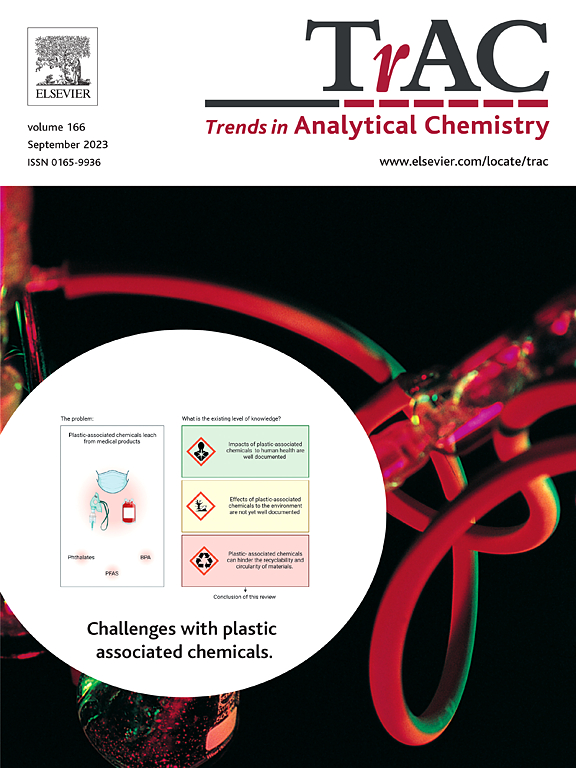Advances in DNA-empowered membrane surface engineering for artificial manipulation and visual analysis of cell-cell communication
IF 11.8
1区 化学
Q1 CHEMISTRY, ANALYTICAL
引用次数: 0
Abstract
The artificial manipulation of cell-cell communication is essential for exploring the key physiological processes, which facilitate insights into the signal transduction pathways that ensure intercellular interactions. Benefiting from the controllable topology and precise self-assembly abilities of DNA nanostructures, the developed nanoplatforms have demonstrated the predictable spatial structures and customized functions. Once anchored to the cell surface, DNA-based nanoplatforms can programmatically modulate cell-cell assembly, offering a modular tool for exploring intercellular interactions. More importantly, by interfacing with cell-surface receptors, the engineered manipulation strategies have both basic and applied research in the controllable regulation of intercellular communication. Focusing on the key signaling pathways involved in the natural cell-cell communication, we will highlight the design principles of artificial regulation and visual analysis of cell-cell communication through DNA-based membrane surface engineering, and summarize the latest advancements in the potential for precision treatment of diseases. Finally, the challenges and outlook on using DNA nanotechnology to manipulate cellular interactions are discussed.
基于dna的膜表面工程在细胞-细胞通讯的人工操作和视觉分析中的进展
细胞间通讯的人工操纵对于探索关键的生理过程至关重要,这有助于深入了解确保细胞间相互作用的信号转导途径。利用DNA纳米结构的可控制拓扑结构和精确自组装能力,所开发的纳米平台具有可预测的空间结构和可定制的功能。一旦锚定在细胞表面,基于dna的纳米平台可以程序化地调节细胞-细胞组装,为探索细胞间相互作用提供模块化工具。更重要的是,通过与细胞表面受体的接口,工程操纵策略在细胞间通讯的可控调控方面具有基础和应用研究。我们将围绕自然细胞-细胞通讯的关键信号通路,重点介绍基于dna的膜表面工程对细胞-细胞通讯的人工调控和可视化分析的设计原理,并总结疾病精准治疗潜力的最新进展。最后,讨论了利用DNA纳米技术操纵细胞相互作用的挑战和前景。
本文章由计算机程序翻译,如有差异,请以英文原文为准。
求助全文
约1分钟内获得全文
求助全文
来源期刊

Trends in Analytical Chemistry
化学-分析化学
CiteScore
20.00
自引率
4.60%
发文量
257
审稿时长
3.4 months
期刊介绍:
TrAC publishes succinct and critical overviews of recent advancements in analytical chemistry, designed to assist analytical chemists and other users of analytical techniques. These reviews offer excellent, up-to-date, and timely coverage of various topics within analytical chemistry. Encompassing areas such as analytical instrumentation, biomedical analysis, biomolecular analysis, biosensors, chemical analysis, chemometrics, clinical chemistry, drug discovery, environmental analysis and monitoring, food analysis, forensic science, laboratory automation, materials science, metabolomics, pesticide-residue analysis, pharmaceutical analysis, proteomics, surface science, and water analysis and monitoring, these critical reviews provide comprehensive insights for practitioners in the field.
 求助内容:
求助内容: 应助结果提醒方式:
应助结果提醒方式:


